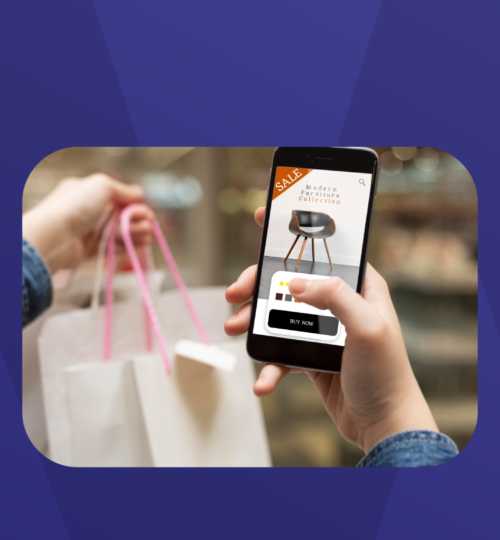Social media experience is becoming more immersive and expansive by the day. Especially after the pandemic, what was once a favourite pastime for the less kinetic and more concerned town-dwellers became a lifeline and catered to our most basic needs.
Pandemics come and go, as history shows, but habits are more persistent. Hence, a further essentialisation of these platforms in our lives seems like the way forward. In this reality, no business, regardless of its scale, can afford to stay out.
However, while social media and mCommerce are acts of marketing diversification for big sellers, it is often the most affordable, and sometimes even the only, option for small enterprises. This is why we have compiled an easy-to-follow guide to social selling and mCommerce for smaller operations.
What are mCommerce, Social Commerce and Social Selling?
Social commerce refers to the trade activities that happen on social media platforms, such as Instagram, Facebook, and Pinterest. Products such as kitchen appliances, home decor, clothing, and accessories are especially compatible with visual-heavy platforms like Instagram and Pinterest.
These platforms help brands create the image of an ideal home, fashion style, and unique presentation that are immediately linked to their products. Mobile commerce, or mCommerce in short, refers to the practice of selling products via apps and websites compatible with mobile devices.
Social selling is advantageous for its immersive style. The latest developments in social media, including the grand vision of Meta, show that social media will expand until it offers a virtual alternative to every aspect of daily life.
In line with these developments, many platforms are adding in-platform shopping features to their services to allow users to do online shopping without the interruption and distraction of changing venues. mCommerce, on the other hand, catches the user by the availability and ease of shopping on a small device that you can carry around in the pocket of your coat.
How Social Selling is Powering mCommerce
According to a 2015 study, social selling and mCommerce have intertwined dynamics that boost the strength and prevalence of each other. When you think about it, mobile devices are what saved us from reading year-old magazines in the waiting room of a dental practice, made a 3-hour bus ride bearable, and aided us throughout laid back weekends.
Most of the time we devote to these devices is spent on social media platforms looking for ideas, motivation, inspiration, or mere entertainment. The endless slide-downs and personalised suggestions on social media mimic correlational neural networks and encourage prolonged mental engagement. Meanwhile, the ease of using a mobile device supports a “think quick-act quick” process.
Together, these two tools defeat obstacles, such as annoying checkout procedures, interruption of experience, and registration forms, achieving unprecedented conversion rates. This force exhibits itself in numbers too. According to data collected by Business Insider in 2020, the revenue from mobile shopping soared to 284 billion dollars, or 45% of all commerce in the U.S.
How to Create Your Social Selling Strategies
When you create your social selling strategy, the first thing you need to consider is compatibility. Marketing experts opine that digital products and services would seem unappealing to the less-technocratic users of these platforms.
Plus, since these platforms are directed more towards individuals, and the buyer personas for many digital products are businesses, your marketing efforts would fly past your target audience. In short, go for social media if you have a physical product.
The second most important consideration is, of course, age and social demographics. For example, it would be best to operate on Facebook if you are selling a solution that removes scratches from cars. This is due to its user base situated mostly in the middle-age range, whereas if you are selling yoga pants and hair glue, Instagram is the place to go.
Similarly, you can use social selling to promote and kickstart your independent fashion line, but if you are a maker of fine bags made of lambskin, you would be better off following a marketing strategy that focuses on organisational channels that diffuse an air of exclusivity.
How to Boost mCommerce Business
Synchronise
Synchronise your social media shops to any mobile commerce apps you might be using, such as Shopify, to keep your online presence consistent and lively. If a user sees a product of yours and now wants to buy it from a platform on which they already have an account for ease, make sure that they can find it regardless of their venue of choice.
Don’t Stop at Selling
One of the many perks of mobile social selling is that people use social media to get inspired and motivated. So don’t just create and promote a line of products–create a vision, an image attached to it, and speak through it. If you make liquid coffee flavours, speak of productivity, focus, or the ways to enrich one’s tastes. If you are selling camping tools, speak of the spiritual value of idyllic escapes, or the mind being the real capital and force.
Don’t Display, But Create
Many platforms that are fit for social selling and mCommerce have a visual emphasis. The most obvious of these is Pinterest. So making quality products is not enough. Curate your online shop in a way that pleases the eye and evokes that strong part of humans that appreciate beauty, even when beauty is in conflict with evolution.
Offer Special Rates for Platform Users
If your brand is active on multiple platforms and uses different channels from enterprise to public, offer special rates to the users of your target social media platforms to boost your conversion rates.
Your Key to Social Commerce is Here
There’s no doubt that mCommerce will soon be the main revenue stream across everything eCommerce. As a no-code eCommerce mobile app building platform, Mowico follows the latest trends in eCommerce and mCommerce to make sure that you get all of the features you need, and social commerce is one of them.
With the eCommerce app you build with Mowico, you automatically get on board with social selling features. The best part is, you only need a couple of hours—from start to finish. Try Mowico now, and see how you can level up your eCommerce game within minutes.







